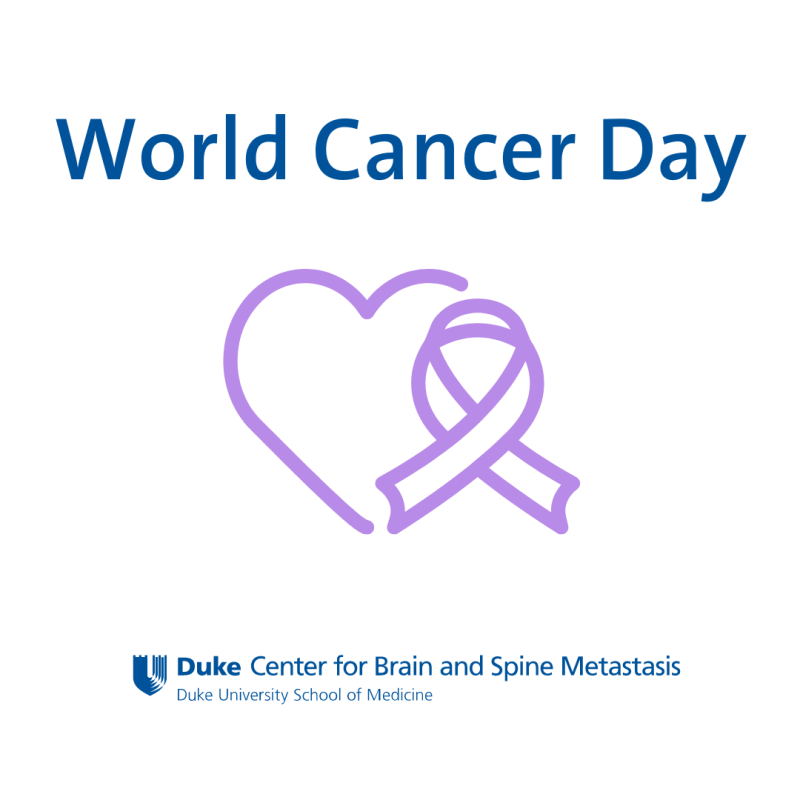
World Cancer Day is a day for education and awareness surrounding cancer and its prevention, detection, and treatment.
As people are surviving longer with cancer, many will see their cancer spread to the brain and spine.
The Duke Center for Brain and Spine Metastasis (DCBSM) combines specialists from neurosurgery, medical oncology, radiation oncology, and palliative care to best care for each patient.
- Palliative care providers are part of each patient’s team, offering a range of services, from pain relief to end-of-life planning.
- To reduce stress for patients, the center strives to see new patients within 48 hours, and to streamline their complex care once treatment begins.
- New patients see all the members of their team sequentially in one day, usually in the same clinic.
- New-patient coordinators and patient navigators coordinate care for patients.
- Clinical trials specifically examine treatments for patients with brain and spine metastasis.
Some cancers are more likely to metastasize to the brain and spine, including lung, breast, kidney, colon, melanoma, prostate, ovarian, and thyroid.
DCBSM is also working on educational initiatives to providers via talks and research and patients via social media.
Signs, symptoms, and cancer screenings
The following symptoms can be associated with brain metastasis:
- Increased cranial pressure
- Headache
- Vomiting
- Changes in consciousness
- Seizures
- Neurological symptoms in a specific location such as movement changes, loss of muscle control, involuntary movements
In spine metastasis, patients can experience:
- Pain
- Fractures
- Spinal cord compression
- Back pain
- Numbness in the legs or belly
- Leg weakness or trouble moving your legs
- Loss of control of urine or stool
- High blood calcium levels
Learn more about cancer types, procedures, and screenings available at Duke Health by clicking the link here.
Equity in Care
The annual global awareness day is this year themed around “Close the Care Gap,” an initiative to focus on reducing inequality in cancer care.
According to the National Cancer Institute, “due to social, environmental, and economic disadvantages, certain groups bear a disproportionate burden of cancer compared with other groups.”
These disparities include:
- incidence (new cases)
- prevalence (all existing cases)
- mortality (deaths)
- survival (how long people survive after diagnosis)
- morbidity (cancer-related health complications)
- survivorship (including quality of life after cancer treatment)
- financial burden of cancer or related health conditions
- screening rates
- stage at diagnosis
Inequity exists based on racial and ethnic population as well as age, disability, gender, geography, income, education, and more.
Low incomes, lack of health literacy, travel distances to care, lack of health insurance, lack of paid medial leave all contribute to individuals not seeking out cancer screening or treatment.
Environmental factors like lacking clean water or air can also increase exposure to cancer-causing substances.